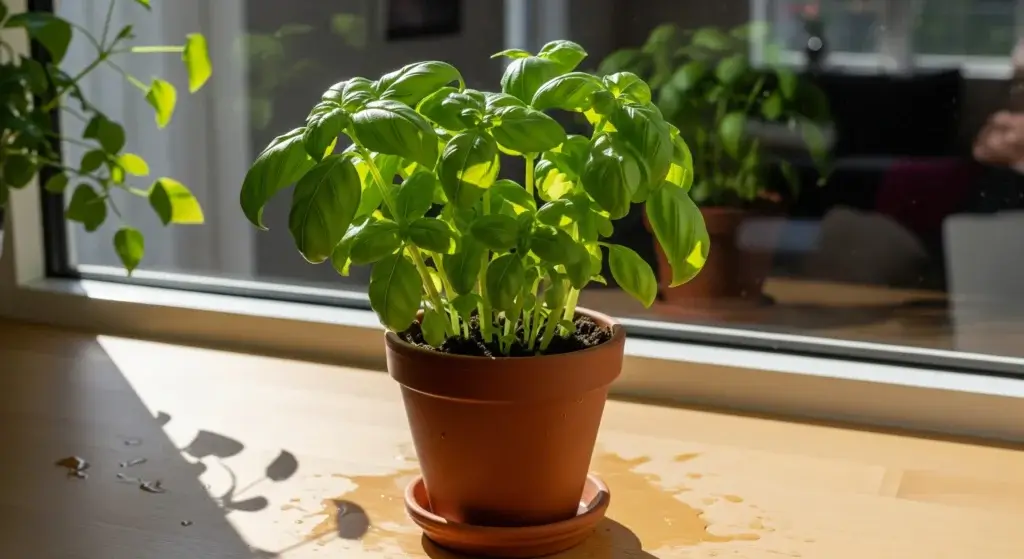
Welcome, plant enthusiasts!
Today, we’re diving into the wonderful world of indoor gardening with a spotlight on the beloved Umbrella Plant.
Whether you’re a seasoned plant parent or just starting your green journey, this guide will equip you with all the tips and tricks you need to keep your Umbrella plant thriving indoors.
About Umbrella Plant
The Umbrella Plant, also known as the Dwarf Umbrella Tree, belongs to the family Araliaceae.
Its botanical name, Schefflera arboricola, reflects its arboreal nature, meaning it’s a tree-like plant with multiple stems.
Originating from Taiwan, this tropical beauty is known for its lush, glossy foliage.
The leaves are arranged in a distinctive umbrella-like fashion, hence the name.
Each leaf consists of several leaflets radiating from a central stem, giving it a graceful and elegant appearance.
With its rapid growth rate, it’s not uncommon for this plant to outgrow its container, prompting the need for occasional pruning and repotting.
- Read also: Hanging Spider Plant Care
- Read also: Mastering Dragon Wing Begonia Care
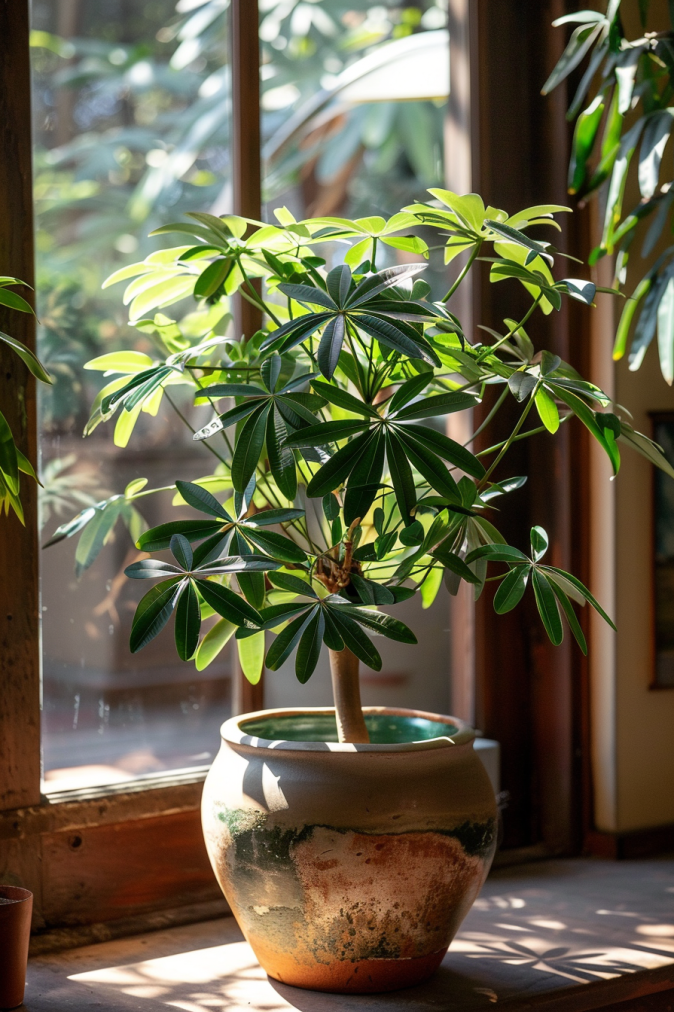
Ideal Conditions for Umbrella Plant to Thrive Indoors
Creating the perfect environment for your Umbrella Plant is key to its health and vitality.
Here are the ideal conditions for an umbrella plant to thrive indoors:
Light
Umbrella plants prefer bright, indirect light.
Too much direct sun can scorch the leaves, while too little light can make them leggy and sparse.
An east- or north-facing window is usually a good spot.
Temperature
Umbrella plants like warm temperatures, between 65 and 75 degrees Fahrenheit (18 and 24 degrees Celsius).
They can tolerate cooler temperatures, but avoid exposing them to anything below 55 degrees Fahrenheit (13 degrees Celsius).
Avoid exposing it to extreme temperature fluctuations or drafts, as this can stress the plant and impact its overall health.
Keep it away from heating vents or air conditioning units that may cause rapid temperature changes.
Humidity
Umbrella plants can tolerate average indoor humidity levels, but they prefer higher humidity, around 50%.
If the air is dry, you can mist the leaves regularly or use a humidifier.
This helps prevent the leaves from drying out and promotes lush, healthy growth.
Additionally, grouping plants together can help create a microclimate with increased humidity.
Watering
Proper watering is essential for the well-being of your Umbrella Plant.
While it enjoys consistently moist soil, it’s crucial to avoid overwatering, which can lead to root rot and other water-related issues.
Allow the top inch of soil to dry out between waterings before watering again.
When watering, ensure thorough saturation of the soil, allowing excess water to drain out from the bottom of the pot.
Use a well-draining potting mix to prevent waterlogging and promote healthy root growth.
Soil
Umbrella plants need a well-draining potting mix. A good mix is equal parts potting soil, perlite, and sand.
Fertilizing
Fertilize your umbrella plant once a month during the growing season (spring and summer) with a balanced liquid fertilizer.
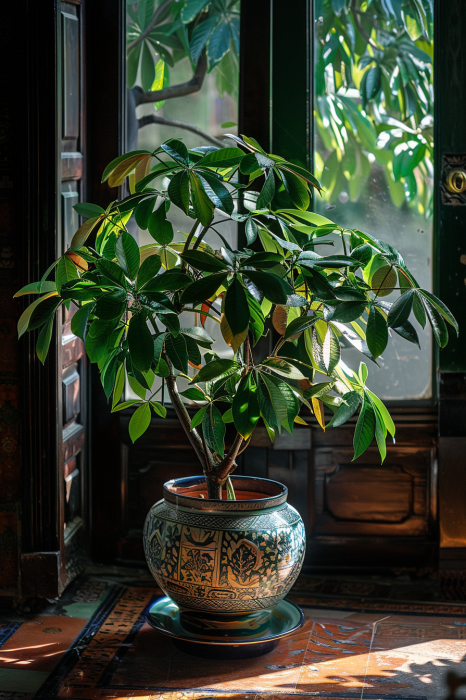
How to Prune Umbrella Plant
Pruning is essential for maintaining the shape and health of your Umbrella Plant. Here’s how to do it:
Before start pruning
- Gather your tools: You’ll need sharp pruning shears or secateurs, sterilized with rubbing alcohol.
- Choose the right timing: Prune in spring or summer when the plant is actively growing. Avoid pruning during winter when it’s dormant.
- Identify your goals: Are you pruning for control, shape, bushier growth, or removal of dead/diseased parts?
Pruning techniques
- Thinning: Remove unwanted branches, particularly leggy, dead, or diseased ones. Cut just above a node (where leaves join the stem), promoting new growth from that point.
- Shaping: Cut back long branches to the desired length, again just above a node. This encourages branching and makes the plant fuller.
- Pinching: For bushier growth, pinch off the growing tips of new shoots. This forces the plant to branch out lower down.
- Heading: To control overall height, cut the main stem just above a node at the desired height. New growth will sprout from below the cut.
How to Propagate Umbrella Plant
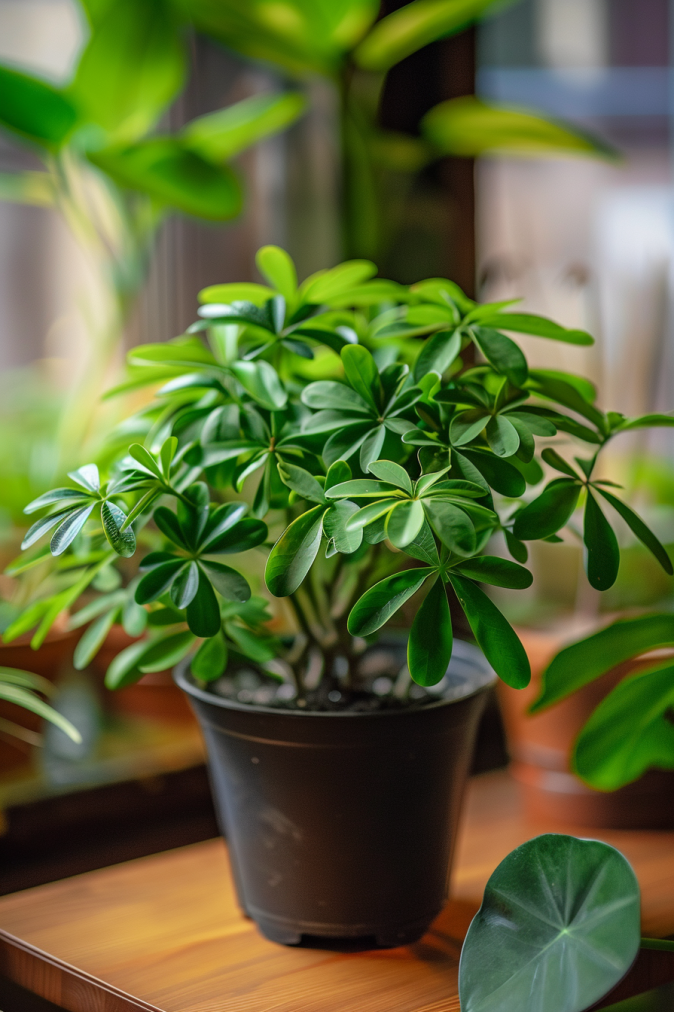
Prepare materials
To propagate an Umbrella Plant, you’ll need the following materials:
- Healthy umbrella plant
- Clean, sharp scissors or pruning shears
- Rooting medium
You have several options for rooting mediums:
- Water: A glass or jar filled with clean water where you can place the stem cuttings to encourage root growth.
- Moist potting mix: A well-draining potting mix that is moist but not waterlogged, suitable for planting stem cuttings directly.
- Small pot or container
- Watering can or spray bottle
- Rooting hormone (optional for faster rooting)
Instructions
Step 1: Selecting the stem cutting
Start by choosing a healthy, mature stem from your Umbrella Plant.
Look for a stem that is free from any signs of damage or disease and has several nodes where leaves are attached.
Nodes are crucial as they contain the cells necessary for root development.
Step 2: Preparation
Once you’ve selected a suitable stem, use clean, sharp scissors or pruning shears to take a cutting.
Make a clean cut just below a node, ensuring that the cutting is around 4-6 inches in length.
Remove any lower leaves from the cutting, leaving only a few leaves at the top to reduce moisture loss and encourage root growth.
Step 3: Rooting medium
There are several options for rooting mediums when propagating Umbrella Plants, including water and moist potting mix.
If using water, place the stem cutting in a jar or glass of water, ensuring that the nodes are submerged.
Alternatively, you can plant the cutting directly into a small pot filled with moist potting mix.
Step 4: Placement
Once your stem cutting is prepared, place it in a warm, bright location away from direct sunlight.
Ideally, the cutting should receive indirect light to encourage root development.
Avoid placing it in a drafty area, as this can slow down the rooting process.
Step 5: Maintaining moisture
Check the rooting medium regularly to ensure that it remains consistently moist, but not waterlogged.
You may need to mist the cutting or add water to the rooting container as needed to maintain adequate moisture levels.
Be careful not to let the cutting dry out, as this can hinder root growth.
Step 6: Patience and monitoring
Root development can take several weeks, so be patient and monitor the progress of your cutting regularly.
Look for signs of new growth, such as emerging roots or fresh leaves.
Once roots have developed and the cutting has established itself, it’s ready to be transplanted into a larger pot with well-draining soil.
Step 7: Transplanting
Carefully remove the rooted cutting from its container and transplant it into a new pot filled with well-draining potting mix.
Gently firm the soil around the roots and water thoroughly to help the plant settle into its new home.
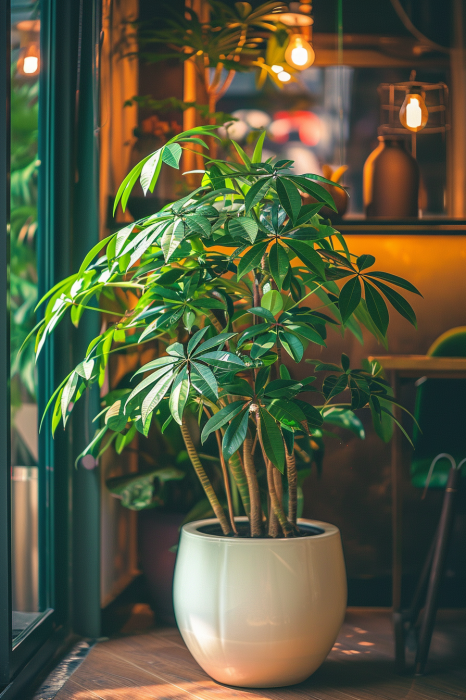
Repotting Umbrella Plant
Repotting your umbrella plant is crucial for its long-term health and growth. Here’s a detailed guide to ensure a successful repotting process:
When to repot
- Young plants: Repot annually during spring when they’re actively growing.
- Mature plants: Repot every 2-3 years, or when the roots outgrow the current pot, visible through drainage holes.
- Signs of rootboundness: Slow growth, wilting despite watering, pot bulging from roots.
Preparing for repotting
- Choose a new pot: Select a pot 2-3 inches wider than the current one with drainage holes. Terracotta or plastic are good options.
- Potting mix: Use a well-draining mix like equal parts potting soil, perlite, and sand.
- Tools: Prepare sharp, sterilized pruning shears, gloves, and a watering can.
Repotting steps
Step 1: Watering
Water the plant well a day before. This makes the soil easier to work with and reduces stress on the plant.
Step 2: Remove plant
Carefully remove the plant from the old pot.
Gently tap the sides and tip it upside down. If stuck, carefully loosen the soil with a knife around the edges.
Step 3: Examine the roots
Remove any dead, brown, or mushy roots with sterilized shears. Slightly loosen any tightly bound roots.
Step 4: Placing new pot
Place the plant in the new pot. Center it with the root ball slightly below the rim.
Step 5: Fill the pot
Fill the pot with fresh potting mix. Gently firm it around the roots, leaving space at the top for watering.
Step 6: Water thoroughly
Until the water runs out of the drainage holes.
Step 7: Place in indirect sunlight
Place the plant in indirect sunlight. Monitor for signs of stress and water when the top inch of the soil feels dry.
Umbrella Plant Pests and Diseases
While Umbrella Plants are relatively hardy, they can still fall victim to pests and diseases.
Keep an eye out for common issues like:
Pests
- Spider mites: Tiny, almost invisible pests that suck sap, causing yellowing, stippling, and webbing on leaves. Look for them on the undersides of leaves.
- Mealybugs: White, cottony masses that cluster on stems and leaf joints, leaving sticky honeydew and causing stunted growth.
- Scale insects: Tiny, armored bumps that suck sap, causing yellowing and leaf drop. Different types may appear brown, white, or black.
- Aphids: Soft-bodied, green, brown, or black insects that cluster on new growth, causing distorted leaves and honeydew buildup.
Diseases
- Root rot: Caused by overwatering and poor drainage, leading to yellowing leaves, wilting, and eventually plant death. Check for mushy roots and soil compaction.
- Leaf spots: Fungal or bacterial infections causing brown or yellow spots on leaves. Often caused by excessive moisture or poor air circulation.
- Botrytis: Fungal disease causing fuzzy gray mold on leaves and stems, particularly in humid conditions.
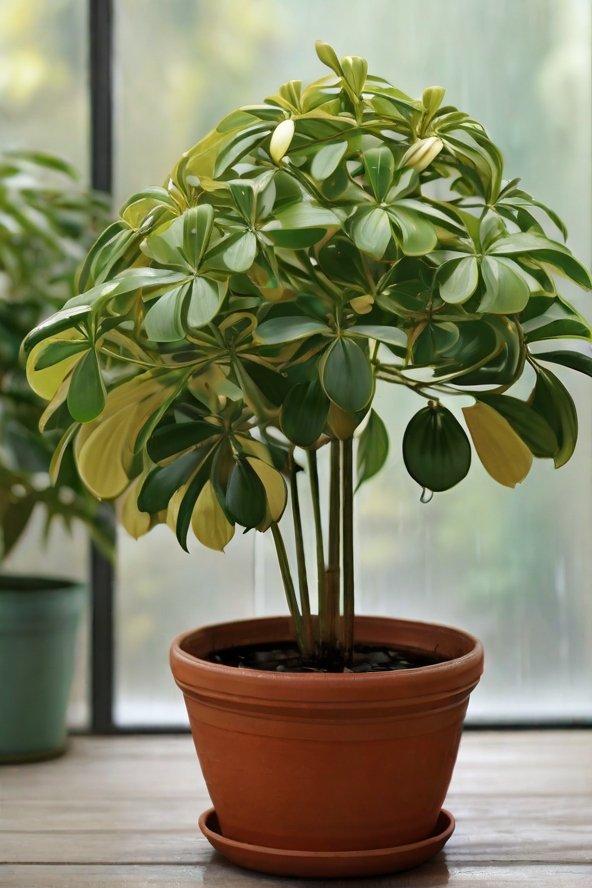
Conclusion
With the right care and attention, your indoor Umbrella Plant can thrive and bring a touch of tropical beauty to your home or office space.
Remember to provide adequate light, water, and humidity, and don’t forget to give it a little TLC with regular pruning and maintenance.
Happy gardening!
- Read also: A Guide to Dracaena Colorama Care
- Read also: Purple Prickly Pear Cactus Care
FAQs
While Umbrella Plants can tolerate some outdoor conditions, they prefer the stable environment provided indoors. Avoid exposing them to direct sunlight or harsh weather conditions.
With proper care, indoor Umbrella Plants can reach heights of up to 6 feet or more over time.
Yes, Umbrella Plants are considered mildly toxic to pets if ingested. The sap contains calcium oxalate crystals, which can cause irritation and digestive upset if consumed.



